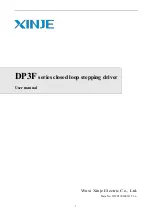
Basic function principles
ELX3202 and ELX3204
31
Version: 1.4.0
The measuring error is generally valid for the entire permitted operating temperature range, also called the
‘usage error limit’ and contains random and systematic portions of the referred device (i.e. ‘all’ influences
such as temperature, inherent noise, aging, etc.).
It is always to be regarded as a positive/negative span with ±, even if it is specified without ± in some cases.
The maximum deviation can also be specified directly.
Example
: Measuring range 0...10 V and measuring error < ± 0.3 % full scale value → maximum deviation ±
30 mV in the permissible operating temperature range.
Note
Lower measuring error
Since this specification also includes the temperature drift, a significantly lower measuring
error can usually be assumed in case of a constant ambient temperature of the device and
thermal stabilization after a user calibration.
This applies to analog output devices.
4.2.3
Temperature coefficient tK [ppm/K]
An electronic circuit is usually temperature dependent to a greater or lesser degree. In analog measurement
technology this means that when a measured value is determined by means of an electronic circuit, its
deviation from the "true" value is reproducibly dependent on the ambient/operating temperature.
A manufacturer can alleviate this by using components of a higher quality or by software means.
The temperature coefficient, when indicated, specified by Beckhoff allows the user to calculate the expected
measuring error outside the basic accuracy at 23 °C.
Due to the extensive uncertainty considerations that are incorporated in the determination of the basic
accuracy (at 23 °C), Beckhoff recommends a quadratic summation.
Example:
Let the basic accuracy at 23 °C be ±0.01% typ. (full scale value), tK = 20 ppm/K typ.; the accuracy
A35 at 35 °C is wanted, hence ΔT = 12 K
Remarks:
ppm
≙
10
-6
%
≙
10
-2
Summary of Contents for ELX3202
Page 2: ......
















































